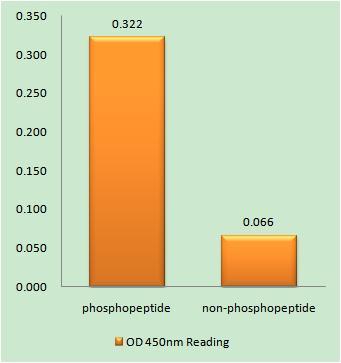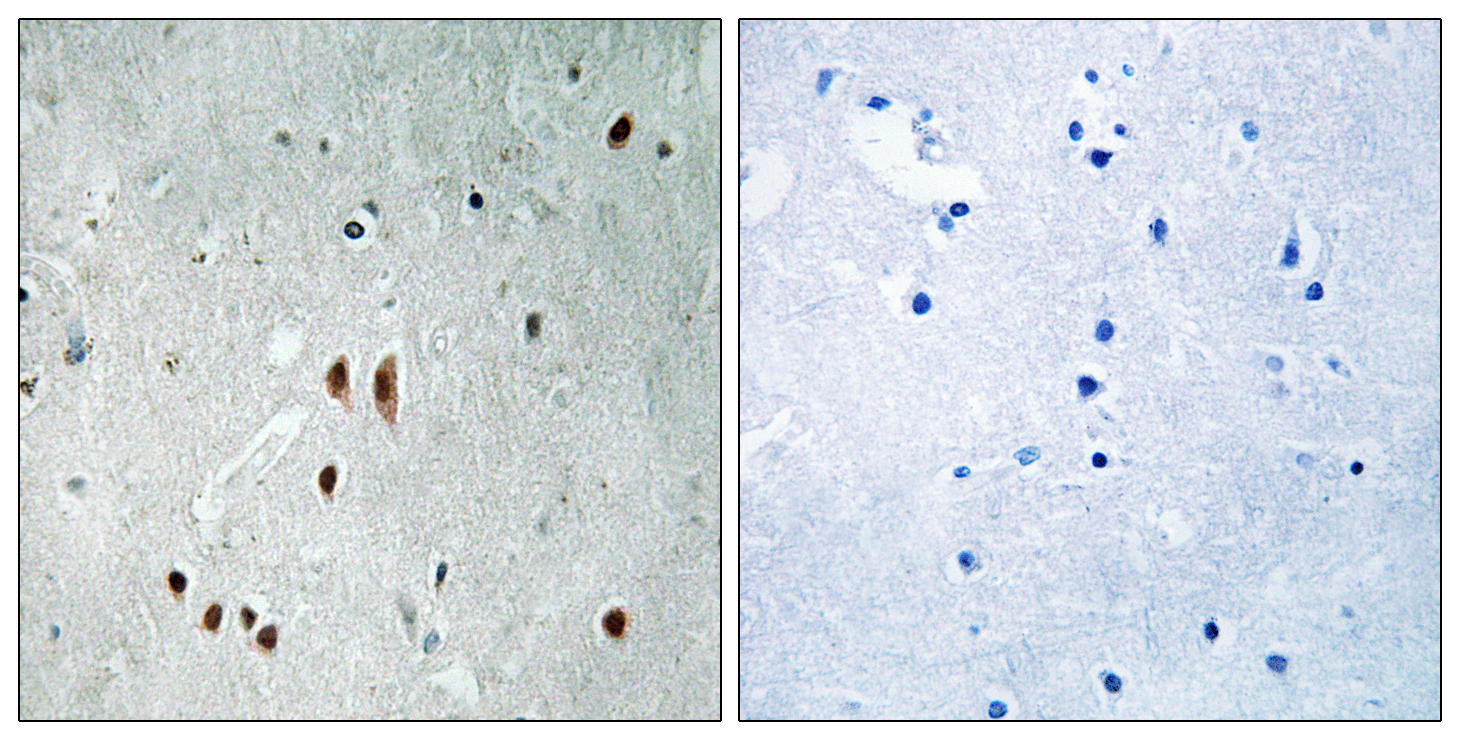CNOT2 (phospho Ser101) Polyclonal Antibody
- Catalog No.:YP1105
- Applications:IHC;IF;ELISA
- Reactivity:Human;Mouse;Rat
- Target:
- CNOT2
- Fields:
- >>RNA degradation
- Gene Name:
- CNOT2
- Protein Name:
- CCR4-NOT transcription complex subunit 2
- Human Gene Id:
- 4848
- Human Swiss Prot No:
- Q9NZN8
- Mouse Gene Id:
- 72068
- Mouse Swiss Prot No:
- Q8C5L3
- Immunogen:
- The antiserum was produced against synthesized peptide derived from human CNOT2 around the phosphorylation site of Ser101. AA range:67-116
- Specificity:
- Phospho-CNOT2 (S101) Polyclonal Antibody detects endogenous levels of CNOT2 protein only when phosphorylated at S101.
- Formulation:
- Liquid in PBS containing 50% glycerol, 0.5% BSA and 0.02% sodium azide.
- Source:
- Polyclonal, Rabbit,IgG
- Dilution:
- IHC 1:100 - 1:300. ELISA: 1:10000.. IF 1:50-200
- Purification:
- The antibody was affinity-purified from rabbit antiserum by affinity-chromatography using epitope-specific immunogen.
- Concentration:
- 1 mg/ml
- Storage Stability:
- -15°C to -25°C/1 year(Do not lower than -25°C)
- Other Name:
- CNOT2;CDC36;NOT2;HSPC131;MSTP046;CCR4-NOT transcription complex subunit 2;CCR4-associated factor 2
- Molecular Weight(Da):
- 60kD
- Background:
- CCR4-NOT transcription complex subunit 2(CNOT2) Homo sapiens This gene encodes a subunit of the multi-component CCR4-NOT complex. The CCR4-NOT complex regulates mRNA synthesis and degradation and is also thought to be involved in mRNA splicing, transport and localization. The encoded protein interacts with histone deacetylases and functions as a repressor of polymerase II transcription. Alternatively spliced transcript variants have been observed for this gene. [provided by RefSeq, Dec 2010],
- Function:
- function:The CCR4-NOT complex functions as general transcription regulation complex.,PTM:Phosphorylated upon DNA damage, probably by ATM or ATR.,similarity:Belongs to the CNOT2/3/5 family.,subunit:Subunit of the CCR4-NOT core complex that contains CHAF1A, CHAF1B, CNOT1, CNOT2, CNOT3, CNOT4, CNOT6 and CNOT8.,tissue specificity:Ubiquitous. Highly expressed in brain, heart, thymus, spleen, kidney, liver, small intestine, placenta, lung and peripheral blood leukocytes.,
- Subcellular Location:
- Cytoplasm . Nucleus .
- Expression:
- Ubiquitous. Highly expressed in brain, heart, thymus, spleen, kidney, liver, small intestine, placenta, lung and peripheral blood leukocytes.
- June 19-2018
- WESTERN IMMUNOBLOTTING PROTOCOL
- June 19-2018
- IMMUNOHISTOCHEMISTRY-PARAFFIN PROTOCOL
- June 19-2018
- IMMUNOFLUORESCENCE PROTOCOL
- September 08-2020
- FLOW-CYTOMEYRT-PROTOCOL
- May 20-2022
- Cell-Based ELISA│解您多样本WB检测之困扰
- July 13-2018
- CELL-BASED-ELISA-PROTOCOL-FOR-ACETYL-PROTEIN
- July 13-2018
- CELL-BASED-ELISA-PROTOCOL-FOR-PHOSPHO-PROTEIN
- July 13-2018
- Antibody-FAQs
- Products Images

- Enzyme-Linked Immunosorbent Assay (Phospho-ELISA) for Immunogen Phosphopeptide (Phospho-left) and Non-Phosphopeptide (Phospho-right), using CNOT2 (Phospho-Ser101) Antibody

- Immunohistochemistry analysis of paraffin-embedded human brain, using CNOT2 (Phospho-Ser101) Antibody. The picture on the right is blocked with the phospho peptide.



